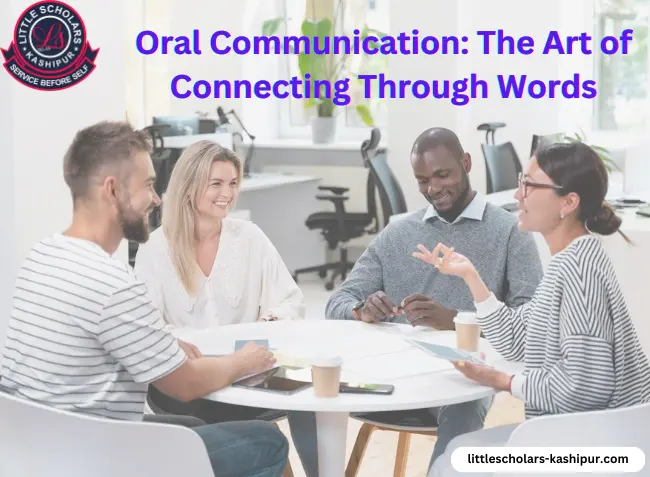In today's fast-paced world, where technology often takes center stage in communication, the art of oral communication remains as relevant as ever. Whether it's conveying ideas in a business meeting, captivating an audience during a presentation, or simply engaging in meaningful conversations with friends and family, the ability to communicate effectively orally is crucial.
Elements of Effective Oral Communication
Effective oral communication is more than just speaking words; it's about conveying ideas clearly and convincingly. Clarity and conciseness are essential, ensuring that the message is understood without ambiguity. Active listening plays a vital role in oral communication, demonstrating respect for the speaker and facilitating meaningful dialogue. Moreover, non-verbal cues such as facial expressions, gestures, and tone of voice can enhance or detract from the message's impact. Empathy and emotional intelligence enable communicators to connect with their audience on a deeper level, fostering trust and understanding.
Types of Oral Communication
Oral communication takes various forms, each serving a unique purpose. Interpersonal communication occurs in one-on-one interactions, allowing for personal connection and rapport building. Group communication involves multiple participants, necessitating effective collaboration and coordination. Public speaking, on the other hand, involves addressing a large audience, requiring clarity, confidence, and engagement.
Barriers to Effective Oral Communication
Despite its importance, oral communication faces numerous barriers that can hinder its effectiveness. Physical barriers such as noise or poor acoustics can disrupt communication, while language barriers may arise in multicultural settings. Psychological barriers such as anxiety or cultural differences can also impede communication, highlighting the need for sensitivity and understanding.
Improving Oral Communication Skills
Fortunately, oral communication skills can be developed and refined with practice and perseverance. Actively listening to others and seeking to understand their perspectives fosters mutual respect and empathy. Enhancing non-verbal communication, including body language and vocal tone, can convey sincerity and confidence. Moreover, soliciting feedback from peers and mentors allows for continuous improvement and self-assessment.
The Role of Oral Communication in Professional Settings
In the professional realm, effective oral communication is indispensable. From business meetings and negotiations to job interviews and presentations, the ability to articulate ideas persuasively can make the difference between success and failure. Strong communication skills enable leaders to inspire and motivate their teams, fostering collaboration and driving innovation.
Virtual Reality in Education: Exploring Learning Beyond Boundaries: Read more
Cultural Considerations in Oral Communication
Cultural diversity adds another layer of complexity to oral communication. Understanding and respecting cultural differences is essential for effective communication across borders and boundaries. Adapting communication style and approach based on cultural norms and expectations demonstrates cultural competence and promotes inclusivity.
Technology and Oral Communication
Advancements in technology have revolutionized the way we communicate orally. Virtual communication tools such as video conferencing and instant messaging enable real-time interaction regardless of geographic distance. While these technologies offer unprecedented convenience, they also present challenges such as technical glitches and miscommunication.
Overcoming Fear of Public Speaking
Public speaking anxiety, commonly known as glossophobia, affects many individuals. However, with proper preparation and practice, it's possible to overcome this fear. Techniques such as visualization, deep breathing, and positive self-talk can help alleviate anxiety and boost confidence. Moreover, seeking opportunities to speak in front of small groups gradually desensitizes individuals to public speaking fears.
Ethical Considerations in Oral Communication
Ethical communication entails honesty, integrity, and respect for others' rights and dignity. Avoiding deceptive practices or manipulation ensures that communication remains transparent and trustworthy. Furthermore, respecting diverse perspectives and fostering open dialogue promotes mutual understanding and collaboration.
Impact of Oral Communication in Personal Relationships
Effective oral communication is not limited to professional settings; it's equally important in personal relationships. Whether expressing love and affection to a partner, resolving conflicts with family members, or connecting with friends on a deeper level, the ability to communicate openly and empathetically strengthens bonds and fosters intimacy.
The Power of Storytelling in Oral Communication
Storytelling is a powerful tool in oral communication, captivating audiences and conveying complex ideas in a compelling manner. By weaving narratives that resonate with listeners' emotions and experiences, communicators can create lasting impressions and inspire action. Whether in business presentations, speeches, or casual conversations, storytelling facilitates connection and engagement.
Future Trends in Oral Communication
Looking ahead, technological advancements are poised to reshape the landscape of oral communication. Artificial intelligence and voice recognition technologies offer new possibilities for automated communication and personalized interaction. Virtual reality communication platforms provide immersive experiences that transcend physical boundaries, enabling virtual meetings and interactions in simulated environments.
10 things you should know about personal learning environments: Read now
Measuring Success in Oral Communication
Success in oral communication can be measured by various metrics, including audience engagement, message retention, and feedback received. Soliciting feedback from listeners and incorporating constructive criticism allows communicators to gauge their effectiveness and identify areas for improvement. Moreover, ongoing reflection and self-assessment enable continuous growth and development.
Types of Oral Communication
Oral communication can be categorized into two main types: formal and informal.
Formal Communication
Meetings: are structured gatherings where information is exchanged and decisions are made.
Presentations: organized speeches or talks aimed at informing or persuading an audience.
Interviews: One-on-one or panel interactions typically used for employment or information gathering.
Informal Communication
Casual Conversations: Everyday chats with friends, family, or colleagues.
Group Discussions: interactive sessions where ideas and opinions are shared among a group.
Social gatherings are events where people engage in spontaneous and relaxed dialogue.
Advantages of Oral Communication
1. Immediate Feedback: One of the biggest advantages is the ability to receive and provide instant feedback, which facilitates effective two-way communication.
2. Personal Touch: It allows for personal interaction, making it easier to convey emotions and build rapport.
3. Clarity and Understanding: The use of voice modulation, tone, and body language can enhance understanding and clarity.
4. Persuasive Power: The ability to persuade and influence others is heightened through direct verbal communication.
Disadvantages of Oral Communication
1. Lack of Record: Unlike written communication, it doesn't provide a permanent record, which can lead to forgetting important details.
2. Misunderstandings: Misinterpretations can occur due to poor articulation, accents, or different speaking paces.
3. Limited Audience Reach: It's often limited to the number of people who can physically hear you at one time.
4. Time-consuming: It can be time-consuming, especially when long explanations or discussions are needed.
Examples of Oral Communication
To better understand oral communication, here are some common examples:
1. Job Interviews: Candidates interact with potential employers to showcase their skills and fit for the role.
2. Classroom Lectures: Teachers convey knowledge and engage with students through spoken words.
3. Business Meetings: Professionals discuss strategies, projects, and make decisions.
4. Telephonic Conversations: People exchange information and maintain relationships through phone calls.
5. Public speeches: Speakers address an audience to inform, motivate, or entertain.
Exploring Opportunities for Learning: The Importance of Technology in Education: Read now
Conclusion
In conclusion, oral communication is a fundamental aspect of human interaction, enabling connection, collaboration, and understanding. By honing their oral communication skills and embracing the principles of clarity, empathy, and authenticity, individuals can enrich their personal and professional lives. Whether conveying ideas in a boardroom, delivering a speech on stage, or engaging in heartfelt conversations with loved ones, the art of connecting through words is a timeless and invaluable skill.




